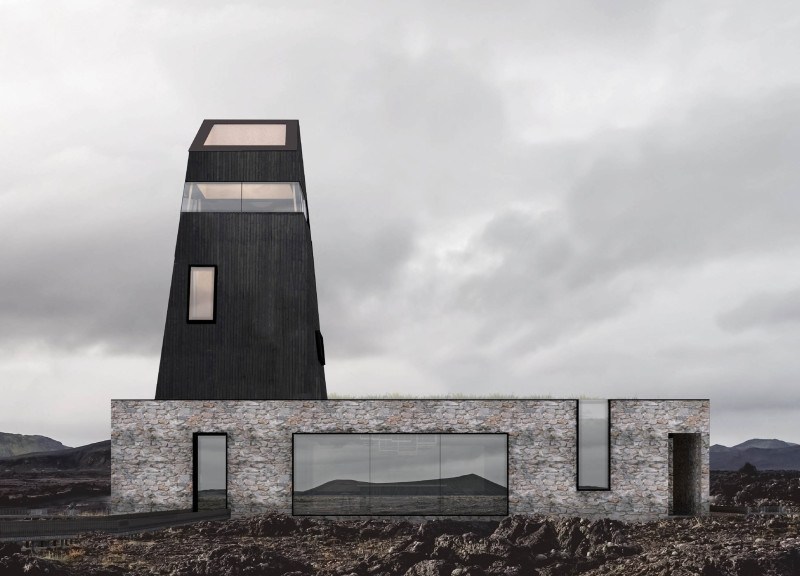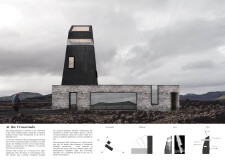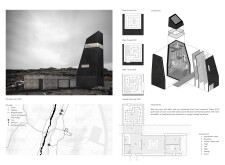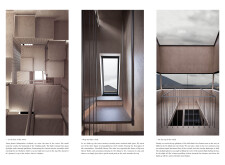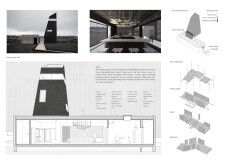5 key facts about this project
The design is located at the crossroads of the Grjótagjá caves in Iceland, a site characterized by the meeting of the European and American continental plates. The building serves two main purposes: an observation tower and a visitor center. The overall concept merges practical functions with a design responsive to the surrounding landscape. Two distinct forms are utilized in the design—a vertical solid for views and a horizontal solid for shelter. This balance creates a cohesive connection between the two structures and their environment.
Vertical Solid
The vertical solid serves as an observation tower, taking cues from the nearby cave formations. Visitors ascend through a series of modular platforms rather than conventional stairs. This design invites people to engage more fully with the space. As they climb, they encounter a skylight at the top, allowing natural light to flood the interior while providing opportunities to appreciate the views of the landscape.
Horizontal Solid
In contrast, the horizontal solid functions as the visitor center and café. It combines traditional Icelandic architectural features with local materials like stone and a green roof. This part of the building prioritizes comfort and practicality, offering a welcoming environment for those traveling through the area. Its design provides a resting place that connects to the natural surroundings while maintaining a low profile.
Environmental Integration
Sustainability plays a significant role in the overall design. The building incorporates various eco-friendly solutions, including water collection systems and zoned heating methods. These features aim to optimize energy use and reduce environmental impact. The design reflects a commitment to responsible construction approaches that resonate with the local climate and ecology.
Materiality
Cross Laminated Timber (CLT) panels are used throughout the structure, contributing to both strength and visual warmth. This choice supports good thermal performance and fire resistance. The natural properties of the wood create a welcoming interior, allowing the building to resonate with its natural setting. The careful selection of materials enhances the connection between the architectural forms and the landscape they inhabit.


